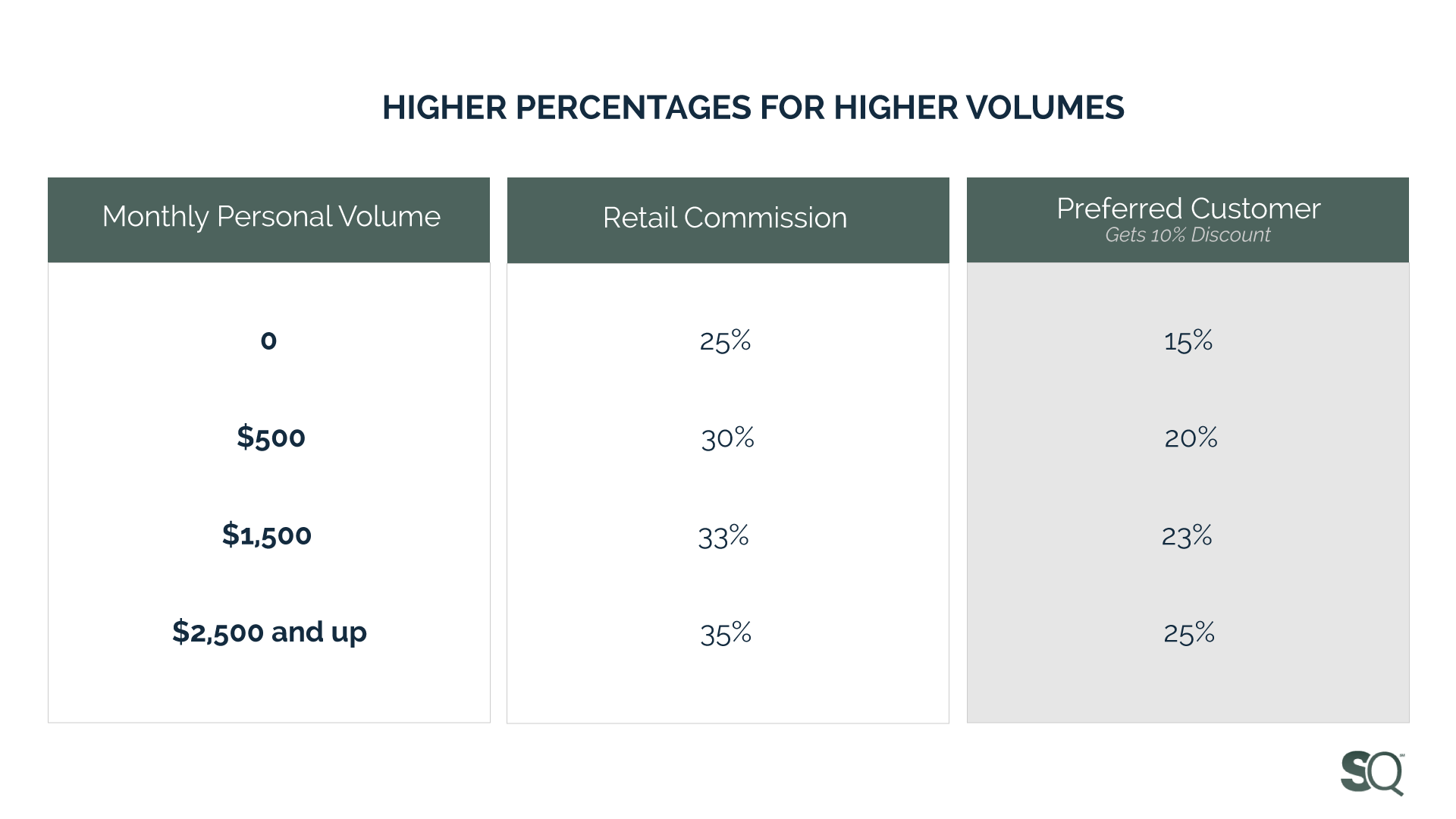The Best MLM Compensation Plan
Is there a “best MLM compensation plan” out there? Is there a “holy grail” plan that works better than any other?
Yes, but it’s not one another company already is using. Would Avon‘s comp plan work at Amway? Would Amway’s comp plan work at Mary Kay Cosmetics? Of course not.
Why not, you ask? The answer is simple: ALIGNMENT.
The comp plan must be in perfect alignment with how the company does direct selling. It must align with field training, pricing strategy, the field culture, leadership development, and so many other things. If not, failure is inevitable.
Every direct sales or MLM company has their own “flavor” of direct selling. They compete against each other not only with their product offering but also their business opportunity. Nu Skin, Mary Kay, and Avon are billion-dollar companies that sell beauty products, but they are different in many other ways.
Different Strategies in MLM Companies
- Pricing strategy. How do you determine the prices you charge to your customers and distributors? Are your products priced high or low? What is your value proposition in the eyes of a consumer?
Read more about Pricing Strategy and Compensation here.
- Customer vs. distributor purchases. What percentage of monthly revenue should come from customers (not reps)? In the USA, the legal requirement today is a minimum of 51%. At Nu Skin, their preferred customers pay the same price as their distributors. At Mary Kay and Avon, the customer pays a higher price so the rep can earn a profit or commission on every sale. What is your strategy?
- Selling approach. When a person enrolls as a distributor, are they taught strategies to find customers & recruits? What is the best way to sell their products? Do reps do online or in-home parties? Or one-on-one selling? Do they make enough commission on customer purchases to make it worth their time? Or do they recruit customers into the business so they can buy at the rep price? Your compensation plan must align to your strategy carefully.
Read about successful MLM Distributor Onboarding here.
- Unique Selling Proposition (USP). Story drives direct selling. What makes your products different than another company’s products? The USP influences how much you can reasonably charge for your products. There’s a reason McDonald’s doesn’t sell a Big Mac for $10. The value isn’t there, so no one would buy it!
- Auto-ship. How much of monthly revenue should come from Auto-ship? Is there a customer loyalty program that drives auto-ship retention? Your auto-ship strategy, if any, will influence your best comp plan design.
Losing revenue on auto-ship from false card declines? Check out our webinar to reduce lost revenue from false declines here or read this article on the Six Ways to Reduce False Declines and Increase Revenue.
- Product Packs & First Timers. How much of your monthly revenue will come from first time orders with product packs? The bigger the product pack, the less likely people will enroll in monthly auto-ship.
- What roles do leaders play? Some plans pay out substantial amounts to a small 2% of the sales force. Other plans try more balance, so newer recruits have a compelling opportunity. Some plans pay little or nothing to leaders for influencing their teams. What should you do?
Best MLM Compensation Plan Building Blocks
Your best MLM compensation plan should include key strategic building blocks.
These building blocks we highlight below will determine many revenues and profit outcomes. They will define your field culture, where they spend most of their time, and how attractive the plan is for new recruits to the business.
These building blocks should include the following:
Customer Commission or Profit
When a rep enrolls a customer (retail customer or preferred customer who is not another rep), they need to earn a commission when they place an order. A vital question: will the sponsoring rep earn enough commission to make it worth their time to continue to enroll new customers? Many companies start with an essential commission percentage, usually the price difference between retail and wholesale rep price. This generally begins at 20% to 25%. Many companies have seen greater results by offering higher percentages for higher volumes. See the following example:
Fast Start Commission
When a sponsor enrolls someone, the new recruit and the sponsor start a three month “Fast Start” period. Special incentives and rewards create a sense of urgency and excitement. By starting fast and strong, the recruit is much more likely to continue working their business and increasing success.
Career Path
Your career path is the “backbone” of the entire compensation plan. It reflects the behaviors and performance levels the plan will reward. “Do this, get that” is the most effective way to drive performance. It must also address “if you DON’T do this, you WON’T get that” so you don’t pay too much to disengaged people. The Career Path should include baby steps—especially in the beginning. A great career path addresses behaviors of selling, recruiting, team building, leadership, and retention. You cannot fix a broken career path by paying more money!
Design your career path right, or the entire plan will perform poorly.
Mentoring and Team Building
A sponsor must receive rewards for mentoring and training new recruits. Every rep must see compelling rewards for building a team in the right way. The most common approaches include:
-
- Uni-Level: a team builder receives commissions based on the personal volume (including customers) of their individual recruits (Level 1 deep), the next personal recruits (Level 2 deep), the following personal recruits (Level 3 deep), etc.Most uni-level approaches pay 3 to 7 levels deep at various percentages based on performance and career path rank. Uni-level mechanisms have proven to be weak in paying large incomes to top-performing leaders whose downlines are much deeper than the depth offered in a uni-level approach.
- Binary: a popular approach in Asia that creates a team structure with only a right and left leg. A leg is a personal recruit and everyone below them. Individual recruits are then placed below the left and right recruits by the computer—called spillover.The Binary plan pays only on the volume in the weaker volume leg. It pays either a fixed dollar bonus for every $x of volume or a percentage of the volume – usually 10%. To learn more about the Binary plans, see my article entitled “Binary Compensation Plans – The Good, the Bad, and the Ugly.”
- Stair-Step: an older approach that pays the difference in percentage earned (a differential) based on team (group) volumes.If I qualify for 30% and you—my personal recruit—qualify for 20%, I get the 10% difference on your team volume. This approach is seldom used in new plans because it creates “blocking”—where an upline person earns less when a downline person earns more. Leaders avoid this approach in modern plans.
Leadership Rewards
Your success will be no greater than your success in developing leaders in your sales force.These are your influencers, and you need to pay them well for their time mentoring, coaching, and developing their downline influencers. Full-time incomes must be achievable by demonstrated results building a size-able downline team of competent people. The most effective leadership reward mechanisms include:
-
-
- Generation Bonuses: a percentage paid to 3 to 6 upline leaders on a downline team manager or leader’s team volume. If Lisa achieves a Team Manager rank in the career path, the upline leaders receive a percentage bonus based on her entire team volume.
- Check Match Bonus: a bonus paid to upline builders calculated as a percentage of the commissions earned from some or all of their downline builders. Almost all binary plans use a Check Match Bonus, and some uni-level plans do as well.
-
Product Pack Bonuses
Some plans pay out differently when a new customer or recruit purchases an optional “product pack” when they enroll. Be careful never to fill the closet with inventory and undermine the desire to enroll in a monthly auto-ship subscription. Regulatory problems have occurred when some companies have relied too heavily on large product pack bonuses. Caution! Never incentivize people to buy more products than they can sell or use in a short period.
Rank Advancement Bonuses
When a person advances to a higher rank in the career path, many plans pay a one-time fixed dollar bonus. This type of bonus has proven to be quite effective in driving people to stretch and advance in rank with a well-designed career path. When people advance in rank, you are growing!
You need to achieve a strategic balance of behavior rewards. Some plans make fatal mistakes by overspending on leader bonuses and underspending on commissions earned by recruits. Other plans do the opposite! Achieving the right balance will determine whether your plan is your best plan.
The best MLM compensation plan design is both an art and a science. If you do it right, the wind will fill your sails!
A note from Terrel: Your compensation plan is one of the most critical steps in designing a winning direct sales company. That’s why Dan Jensen Consulting is the only MLM compensation plan design company we trust to introduce to our ServiceQuest clients.
Dan Jensen, Andi Sherwood, and Brian Jensen understand your future growth is dependent on how well your compensation plan aligns with the business and sales force you are building. Their team customizes compensation plans to support healthy direct sales and MLM company growth.
Powerful compensation plans do two things: drive sustainable growth and comply legally. After serving many of the top 100 direct sales companies, the team at Dan Jensen Consulting knows what it takes to build a highly successful company from startup to multi-national growth.






